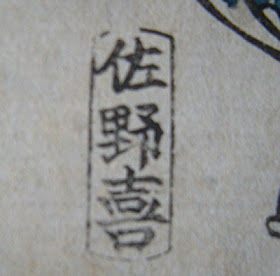I found beautiful gold and brown Sengaku Kutani plate on a recent treasure hunt looking for Asian art and antiques. When I initially saw it laying on the floor of the shop, I was about to pass by it, because, at first glance it didn't look like Japanese porcelain to me, at least not anything currently in my collection or anything I'm familiar with or have seen, nevermind even look antique, but modern, mid 20th century, as it is, but as my habit is, I picked it up to see what the mark said on the bottom, and that's when I saw the mark and said to my self "ooh.. it's Kutani". The plate is a golden yellow, with brown pine trees, and some gold leaf details and is marked 九谷泉岳, Kutani Sengaku.
When I got home I had to refer to kanji charts and after flipping through page after page, looking through at least 1000+ different kanji, I was able to translate the name Sengaku 泉岳, although I immediately recognized the characters for Kutani 九谷, and knew the character for ku & ga 岳, I had to look up the remaining character 泉, which took some time, & I am pleased with my efforts to translate the signature as that of Sengaku. The mark reads 九谷泉岳, Kutani Sengaku..
As of this posting, I have yet to find out any information on Sengaku, the artist who made this, other than he was born in 1933 and specializes in polychromes. Assuming it's the same Sengaku who makes Kutani porcelain under the name Nakamura Sengaku. Unfortunately the search results for Kutani Sengaku are flooded with spammy results from a particular shady scammer on eBay that is fraudulently claiming a particular Sengaku piece as a Meiji period antique, which is a load of fabricated BS because Sengaku wasn't even alive then, and didn't start making ceramics until probably the 1950s.
For Sale. $500 usd /obo + shipping & insurance
Notes on my personal collection of Asian art & antiques.. 亚洲艺术与古董收藏黎塔藇呤凯利
▼
August 30, 2014
August 21, 2014
Jiāqìng Period Qing Dynasty Chinese Porcelain Famille Verte Plate Da Qing Jiaqing Nian Zhi 大清嘉庆年制
I'm thrilled with today's Asian treasure finds, among them, this authentic, original Qing Dynasty Jiāqìng period Famille Verte charger plate, circa 1796 - 1820, with a butterflies and gourds motif. It is marked with the traditional zhuanshu seal of the period, 大清嘉庆年制 , Dà qīng jiāqìng nián zhì, and is in near mint condition. The back has 4 red bats.
In classical feng shui applications, the bat is considered a symbol of wealth and used as a wealth cure because the same word/pronunciation for Bat is "fu", which also means "Prosperity" in Chinese. Bat also came to represent happiness and longevity, so it is an auspicious symbol in Chinese culture.
The bat (fu 蝠) is a representation of "good fortune" or happiness (fu 福) because both characters are pronounced fu. Often the bat is shown flying upside down because the character (dao 倒) for "upside-down" and the character (dao 到) meaning "to have arrived" are both pronounced dao. Therefore, if a person were to say "the bat is flying upside down" a listener could just as easily hear this as "happiness has arrived" which, of course, has a very auspicious connotation.
Also, "a bat descending from the sky" (fuzi tianlai 蝠子天来) sounds exactly like "happiness descends from heaven" (fuzi tianlai 福子天来). Two bats facing each other mean double good fortune or happiness.
In the Mandarin Language, a bat is called Biānfú , 蝙蝠 which is homophonous with Biàn fú, 變福 which means “becoming prosperous” or “turning into blessings”.
The motif of butterflies
and gourds are a favorite design on Chinese enamelled wares.
Butterfly ( dié 蝶 ) and gourds ( guā 瓜 ) represent the wish for many sons and grandsons (Guā dié miánmián 瓜瓞 绵绵 ). The thousands
of seeds found in gourds symbolize the wish for ceaseless generations of descendants. According to Teresa Tse
Bartholomew in Hidden Meanings in Chinese Art, San Francisco, 2006, p. 62, the term 'guadie mianmian' comes from
the Book of Odes which is one of the earliest collections of Chinese poetry.
In classical feng shui applications, the bat is considered a symbol of wealth and used as a wealth cure because the same word/pronunciation for Bat is "fu", which also means "Prosperity" in Chinese. Bat also came to represent happiness and longevity, so it is an auspicious symbol in Chinese culture.
The bat (fu 蝠) is a representation of "good fortune" or happiness (fu 福) because both characters are pronounced fu. Often the bat is shown flying upside down because the character (dao 倒) for "upside-down" and the character (dao 到) meaning "to have arrived" are both pronounced dao. Therefore, if a person were to say "the bat is flying upside down" a listener could just as easily hear this as "happiness has arrived" which, of course, has a very auspicious connotation.
Also, "a bat descending from the sky" (fuzi tianlai 蝠子天来) sounds exactly like "happiness descends from heaven" (fuzi tianlai 福子天来). Two bats facing each other mean double good fortune or happiness.
In the Mandarin Language, a bat is called Biānfú , 蝙蝠 which is homophonous with Biàn fú, 變福 which means “becoming prosperous” or “turning into blessings”.
August 17, 2014
Japanese Double Fish Wood Sculpture Made by Ōkawa Kōtarō 幸古郎 作 幸野 氏
Not too long ago I wrote about a Chinese auspicious double fish wind chime I found in a local second hand resale shop, and today I'd like to share with you a Japanese double fish wood sculpture I just found a few days ago.
Ironic that the double fish symbol is an auspicious symbol, because I literally just found this out of nowhere. I was walking home with my daughter when I saw a plastic bin full of old photo albums next to trash barrels. Curious about what else may be in the bin, I decided to take a look, against the objections of my daughter who whined at me "oh my god!. It's just old junk. There's nothing Chinese in it". Well, lo and behold, to my delight, and bewildered at this odd coincidence, I happily responded back to her "Yes there is, see" as I pull out and hold up this Japanese wood sculpture of double fish mounted on a tree wood slice.
It appears I have been blessed with good fortune. :)
At the time, when I initially found it, I assumed it to be Chinese, however, having asked my friend Hung in Taiwan for a translation, it turns out that it is Japanese. The calligraphy text reads 大川 幸太郎, which translates as being made by Master Ōkawa Kōtarō 幸野 氏,
Okawa Kotaro is a traditional wood carver who specialises in Buddhist statuary. He lives and works in the Shitamachi neighbourhood of Tokyo, Asakusa. He is the author & subject of the book "How to Make Wood Carving of Buddha: Gentle Buddhist Image Maker in Pictures "
"
Ironic that the double fish symbol is an auspicious symbol, because I literally just found this out of nowhere. I was walking home with my daughter when I saw a plastic bin full of old photo albums next to trash barrels. Curious about what else may be in the bin, I decided to take a look, against the objections of my daughter who whined at me "oh my god!. It's just old junk. There's nothing Chinese in it". Well, lo and behold, to my delight, and bewildered at this odd coincidence, I happily responded back to her "Yes there is, see" as I pull out and hold up this Japanese wood sculpture of double fish mounted on a tree wood slice.
It appears I have been blessed with good fortune. :)
At the time, when I initially found it, I assumed it to be Chinese, however, having asked my friend Hung in Taiwan for a translation, it turns out that it is Japanese. The calligraphy text reads 大川 幸太郎, which translates as being made by Master Ōkawa Kōtarō 幸野 氏,
Okawa Kotaro is a traditional wood carver who specialises in Buddhist statuary. He lives and works in the Shitamachi neighbourhood of Tokyo, Asakusa. He is the author & subject of the book "How to Make Wood Carving of Buddha: Gentle Buddhist Image Maker in Pictures
August 1, 2014
Japanese Woodblock Print: Blossoms on Asuka Hill by Keisai Eisen 渓斎 英泉
Original Japanese ukiyo-e woodblock print by Keisai Eisen 渓斎 英泉 ,
original Edo period nishiki-e ukiyo-e woodblock print in the bijinga genre.
The print is Blossoms on Asuka Hill (Asukayama no hana), from the series Matches for the Cherry Blossoms at Famous Places (Mitate meisho sakura tsukushi), by Keisai Eisen 渓斎 英泉 (1790–1848), Published in Edo period Japan, 1830, publisher seal Maruya Jinpachi (Marujin, Enjudô). The aratame, I believe says Kaiin: Kyoku 改印: 極
Keisai Eisen (渓斎 英泉, 1790 – 1848) was a Japanese ukiyo-e artist who specialized in bijinga (pictures of beautiful women). His best works, including his ōkubi-e ("large head pictures"), are considered to be masterpieces of the "decadent" Bunsei Era (1818–1830). He was also known as Ikeda Eisen, and wrote under the name of Ippitsuan.
Eisen was born in Edo into the Ikeda family, the son of a noted calligrapher. He was apprenticed to Kanō Hakkeisai, from whom he took the name Keisai, and after the death of his father he studied under Kikugawa Eizan. His initial works reflected the influence of his mentor, but he soon developed his own style.
He produced a number of surimono (prints that were privately issued), erotic prints, and landscapes, including The Sixty-nine Stations of the Kiso Kaidō, which he started and which was completed by Hiroshige. However, his most famous works are the bijin-e (pictures of beautiful women) which portrayed the subjects as more worldly than those depicted by earlier artists, replacing their grace and elegance with a less studied sensuality. He produced many portraits and full-length studies depicting the fashions of the time.
In addition to producing a prolific number of prints, he was a writer, producing biographies of the Forty-seven Ronin and several books, including a continuation of the Ukiyo-e Ruiko (History of Prints of the Floating World), a book which documented the lives of the ukiyo-e artists. His supplement is known as "Notes of a Nameless Old Man." He describes himself as a dissolute hard-drinker and claims to have been the owner of a brothel in Nezu in the 1830s which had burned down.
For Sale. $500 usd /obo + shipping & insurance
original Edo period nishiki-e ukiyo-e woodblock print in the bijinga genre.
The print is Blossoms on Asuka Hill (Asukayama no hana), from the series Matches for the Cherry Blossoms at Famous Places (Mitate meisho sakura tsukushi), by Keisai Eisen 渓斎 英泉 (1790–1848), Published in Edo period Japan, 1830, publisher seal Maruya Jinpachi (Marujin, Enjudô). The aratame, I believe says Kaiin: Kyoku 改印: 極
The print shows signs of age, but overall is in pretty good shape for a 184 year old print. The back has somebody's notation marked in red pencil 11818 Gela, possibly a collection reference # or other form of ownership marking. There is also another notation written in light and faded pencil that I can not make out or read. The paper itself shows some light foxing, acid burn, etc as well as a small hole, most likely due to improper framing, care & display, otherwise it's in very good condition. The print was in a frame for so long that the backing of the frame shows lines of the print and although I know absolutely nothing whatsoever about antique picture frames, my assumption is that it's an original frame from Edo period Japan.
Keisai Eisen (渓斎 英泉, 1790 – 1848) was a Japanese ukiyo-e artist who specialized in bijinga (pictures of beautiful women). His best works, including his ōkubi-e ("large head pictures"), are considered to be masterpieces of the "decadent" Bunsei Era (1818–1830). He was also known as Ikeda Eisen, and wrote under the name of Ippitsuan.
Eisen was born in Edo into the Ikeda family, the son of a noted calligrapher. He was apprenticed to Kanō Hakkeisai, from whom he took the name Keisai, and after the death of his father he studied under Kikugawa Eizan. His initial works reflected the influence of his mentor, but he soon developed his own style.
He produced a number of surimono (prints that were privately issued), erotic prints, and landscapes, including The Sixty-nine Stations of the Kiso Kaidō, which he started and which was completed by Hiroshige. However, his most famous works are the bijin-e (pictures of beautiful women) which portrayed the subjects as more worldly than those depicted by earlier artists, replacing their grace and elegance with a less studied sensuality. He produced many portraits and full-length studies depicting the fashions of the time.
In addition to producing a prolific number of prints, he was a writer, producing biographies of the Forty-seven Ronin and several books, including a continuation of the Ukiyo-e Ruiko (History of Prints of the Floating World), a book which documented the lives of the ukiyo-e artists. His supplement is known as "Notes of a Nameless Old Man." He describes himself as a dissolute hard-drinker and claims to have been the owner of a brothel in Nezu in the 1830s which had burned down.
For Sale. $500 usd /obo + shipping & insurance
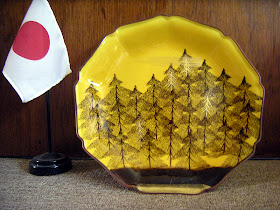
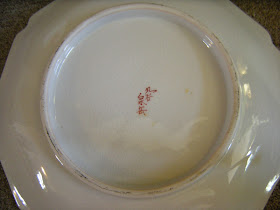
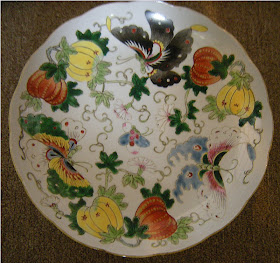
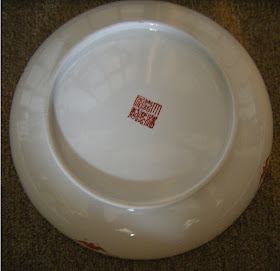

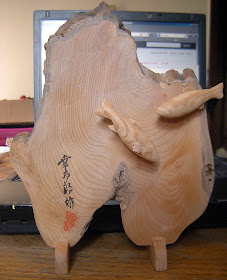

,+from+the+series+Matches+for+the+Cherry+Blossoms+at+Famous+Places+(Mitate+meisho+sakura+tsukushi),+by+Keisai+Eisen+%E6%B8%93%E6%96%8E+%E8%8B%B1%E6%B3%89.jpg)
